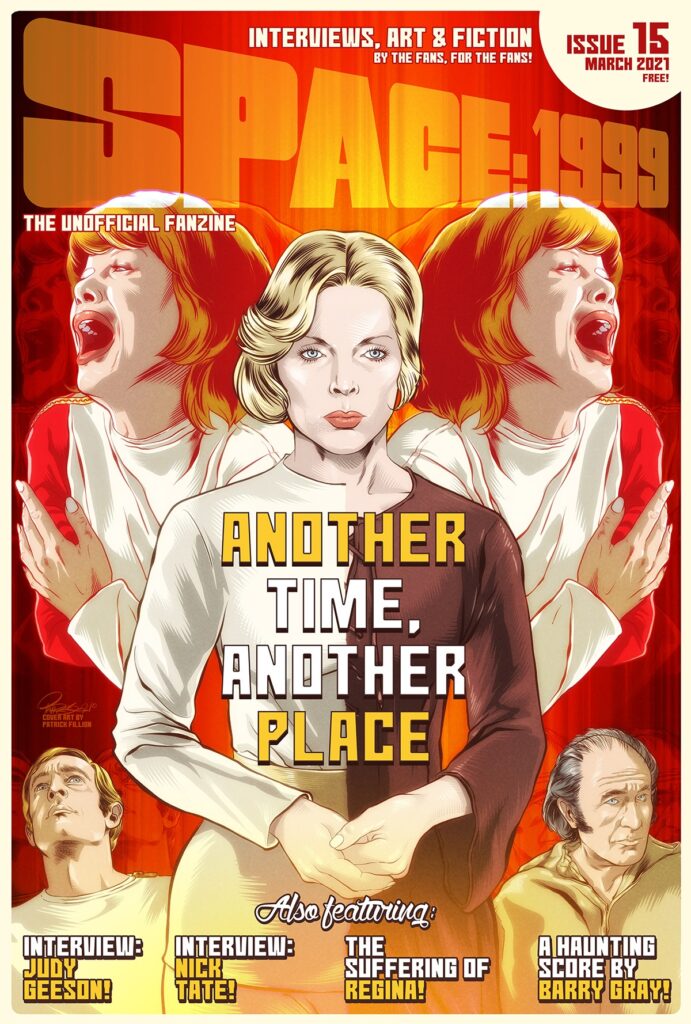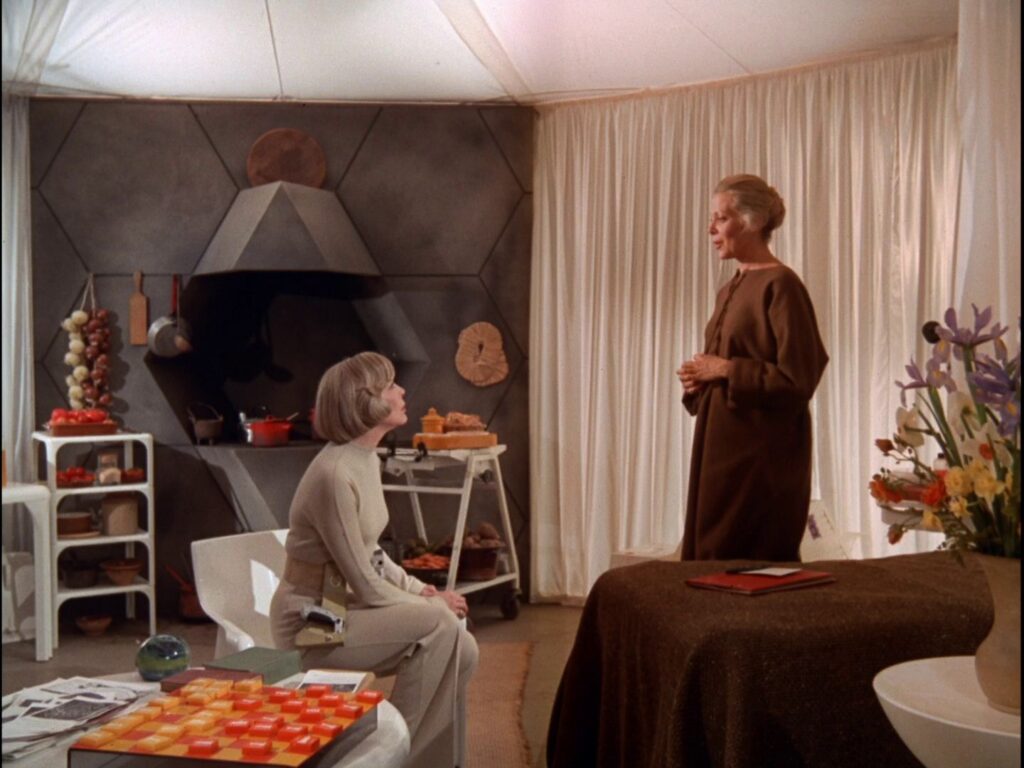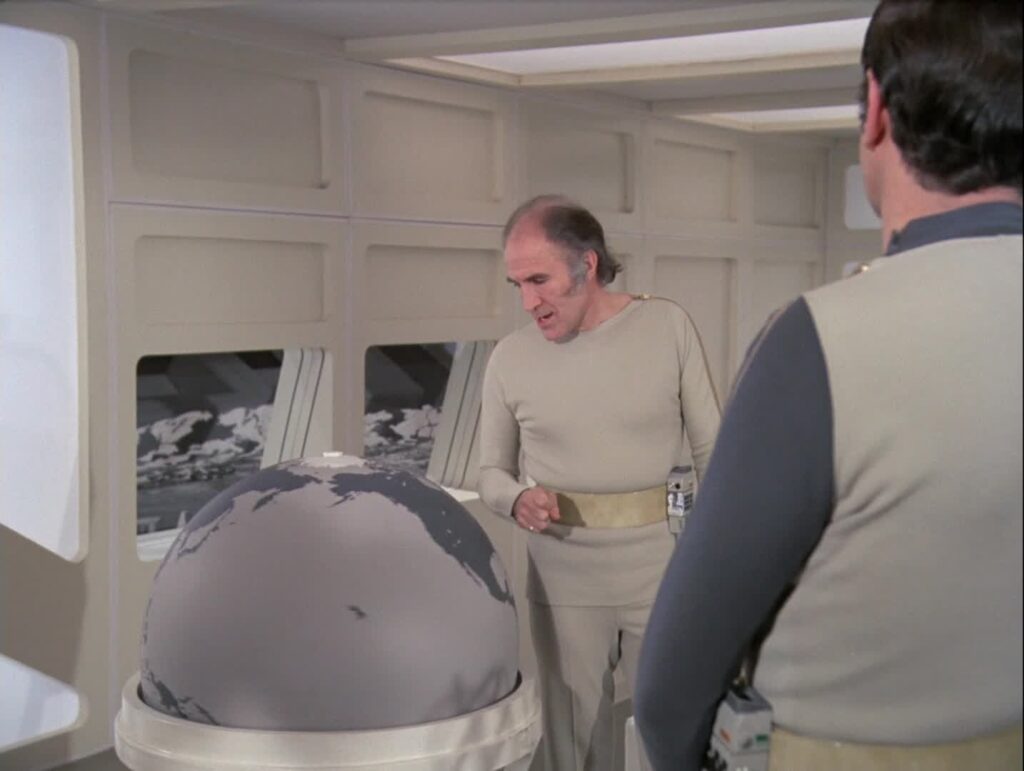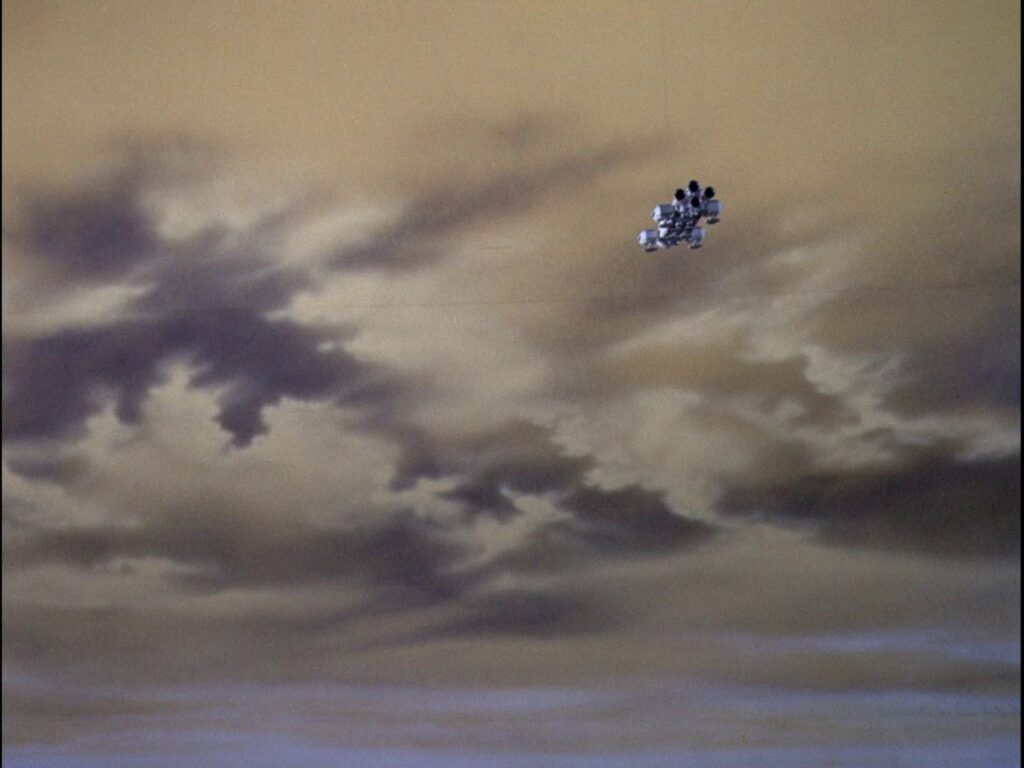One of the shining stars of Season One, there are some interesting questions, observations and thoughts about this episode. This episode (no pun intended) started out with a bit of a space warp phenomena, and of course the focus with Regina Kesslann (or Carter) who would ultimate be affected more than the other Alphans. Her character catapults the storyline along the way (Alan Carter and her apparently had a relationship and got married in the alternate timeline). After she passes (sorry, spoiler alert) the story moves towards discovering the “other” moon (which is apparently five years in the future). First the Alpha tour and then the crashed Eagle tour. As much as Alan is blamed for crashing Eagles, it was apparent that WAS his (and Koenig’s) demise after all; yeah, ironic. Finally, the travel to the “Earth” of the future (past) to discover the remaining Alphans and what they did to survive.

An early produced, well written and excellent story telling tale, this particular episode epitomizes the MUF (the Mysterious Unknown Force; this adopted phrase was actually coined by David Houston in his article from the famous Starlog #2). Fans would hold this phrase near and dear with their love for Space: 1999 (long before Star Wars, folks). Using it for reference (as I just did) to describe a great many of the Space: 1999 Season One episodes. It does apply to Season 2, but not nearly as often and quite frankly, it doesn’t take center stage as it did in the first season. This story was also used as part of the Italian compilation movie Spazio: 1999.











This episode has been discussed a number of times, but there are still some unanswered questions about the material items that were taken from the future moon & Earth and then brought back to “our” Alpha. So, what’s up with those flowers shown at the end that Victor grew and Helena took back? What happened to the dead bodies of both Carter and Koenig after the autopsy? I suppose in all reality, it’d be rather weird to do something with those cadavers knowing that you had perished in the other timeline. I suppose I’d be more self conscience. I mean, who wouldn’t?

Alternate Bergman says “We know that Regina died when she confronted herself in her mind. Our Helena died when she confronted herself in the flesh.” In addition, the alternate Helena says “My time here is finished. It’s my own decision.” Then alt Helena dies in Koenig’s arms, not when meeting Alpha Helena. Is it Helena’s decision because she accepted her inevitable death? The logic and physical cause of one Alphan dying is fuzzy. Another MUF reason that all circumstances cannot be answered. Which, quite frankly, is the beauty of this show. Some would say that is sloppy writing, but the not knowing gives the story strength. It sure does emphasize that John and Helena are meant for each other.

Some other highlights you get to hone in on are the cinematography style that was used to shoot various sequences such as the moon going into the space vortex. You get to see some unique shots of Alpha getting thrown off its stable gravity kilter. There was emphasis on the poor chap standing on the Main Mission balcony and falling over: in three separate sequential scenes. I wonder if first time viewer noticed the windowed wall there in Main Mission where they removed that side of the room stairs. Just a quick mention. The producers removed it prior to this episode, but you really notice this in the below sequence. Rather a shame, too, but the non-Alphans probably didn’t notice that it was last used in Ring Around The Moon.



Another Time, Another Place has a special place in most fans’ hearts since this shares some great character qualities seldom seen in the rest of the show. Alan was married, Paul and Sandra were married, John and Helena were married. I’m thinking there was a lot of wedlock happening in the not so distant future. As a what if question, it sure would have been interesting dialog if both Bergman’s ran into each other. The alt Vic was a little different than our own, wouldn’t you say?



One of the few questions I always had was when our Alphans were making their way to the Earth, wouldn’t the Eagle make some sort of noise giving the alt Alphans a “heads up” on “well, here they come; wonder who’s on board” awareness.



As an amazing episode as it is, we fans will probably forever be asking. Let’s not forget the dedicated music suites used for “this episode”. Barry Gray really sets the “feel” for the show just as John Williams does for whatever subject he writes for. What is your favorite sequence in this episode? Did you have any questions over the years that often went unanswered? If you’re not back on your moon with they both collide, you will have no place to die.
I must admit, I thought Judy Geeson wa a bit over the top, acting-wise. I realize that she does largely what the director asked of her, but her performance was a low spot for me.
This is one of my top five favorite episodes. The score in particular intensifies the mood of the story ( whenever I picture Moonbase Alpha in my mind, it’s usually Barry Gray’s melancholy 6 note motif that I hear… probably because it was reused so often for establishing shots of the base in the rest on series one ).
I also think that Barbara Bain gives one of her best performances as “future” Helena. The scene where she emerges from her home, sees John for the first time in five years and slowly walks toward him is wonderful. Only one word is said – “John” – but the subtle mix of emotions conveyed in that one word is powerful. Love, sadness, and longing are all there, playing in her expression, without any histrionics. Beautiful.
Definitely one of my favorite episodes from Year One of the series. It certainly had a cerebral, surrealistic, and almost melancholy quality to its storyline.